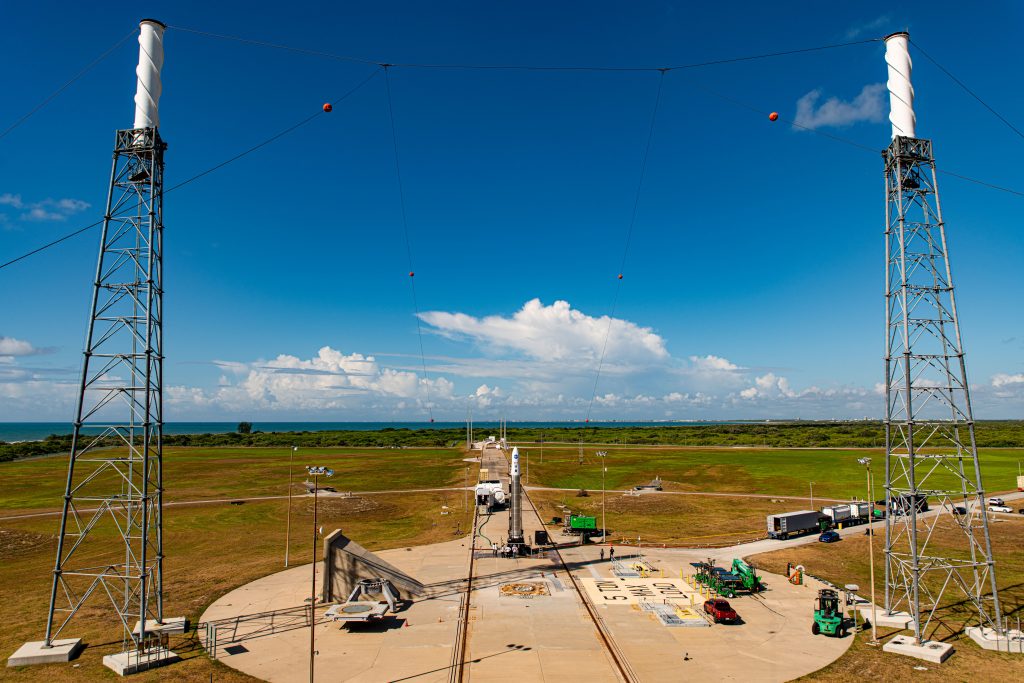 Launch day has arrived for NASA’s commercial partner Astra. A pair of small satellites wait atop Astra’s Rocket 3 for liftoff from Space Launch Complex 46 at Cape Canaveral Space Force Station in Florida. This mission will send two-shoebox sized CubeSats to low-Earth orbit. A two-hour launch window opens at noon EDT.
Launch day has arrived for NASA’s commercial partner Astra. A pair of small satellites wait atop Astra’s Rocket 3 for liftoff from Space Launch Complex 46 at Cape Canaveral Space Force Station in Florida. This mission will send two-shoebox sized CubeSats to low-Earth orbit. A two-hour launch window opens at noon EDT.
This is the first of three planned launches for NASA’s Time-Resolved Observations of Precipitation structure and storm Intensity with a Constellation of Smallsats (TROPICS) mission. Together the three launches will attempt to place six satellites in three different orbital planes to study the formation and development of tropical cyclones, making observations more often than what is possible with current weather satellites. The six TROPICS satellites will join the TROPICS Pathfinder satellite, which is already in orbit.
The six TROPICS satellites will maximize their time over the part of the Earth where tropical cyclones form and will work in concert to improve observations of tropical cyclones. The spread of the satellites means that a satellite should pass over any spot in an area stretching from the Mid-Atlantic region of the United States to the southern coast of Australia about once an hour. TROPICS will provide data on temperature, precipitation, water vapor, and cloud ice by measuring microwave frequencies, providing insight into storm formation and intensification. This new data, coupled with information collected from other weather satellites, will increase understanding of tropical cyclones and improve forecasting models.
Follow launch updates on this blog and stay connected with the mission on social media.
Twitter: @NASA_LSP, @NASAEarth, @NASAKennedy, @NASA, @Astra
Facebook: NASA
